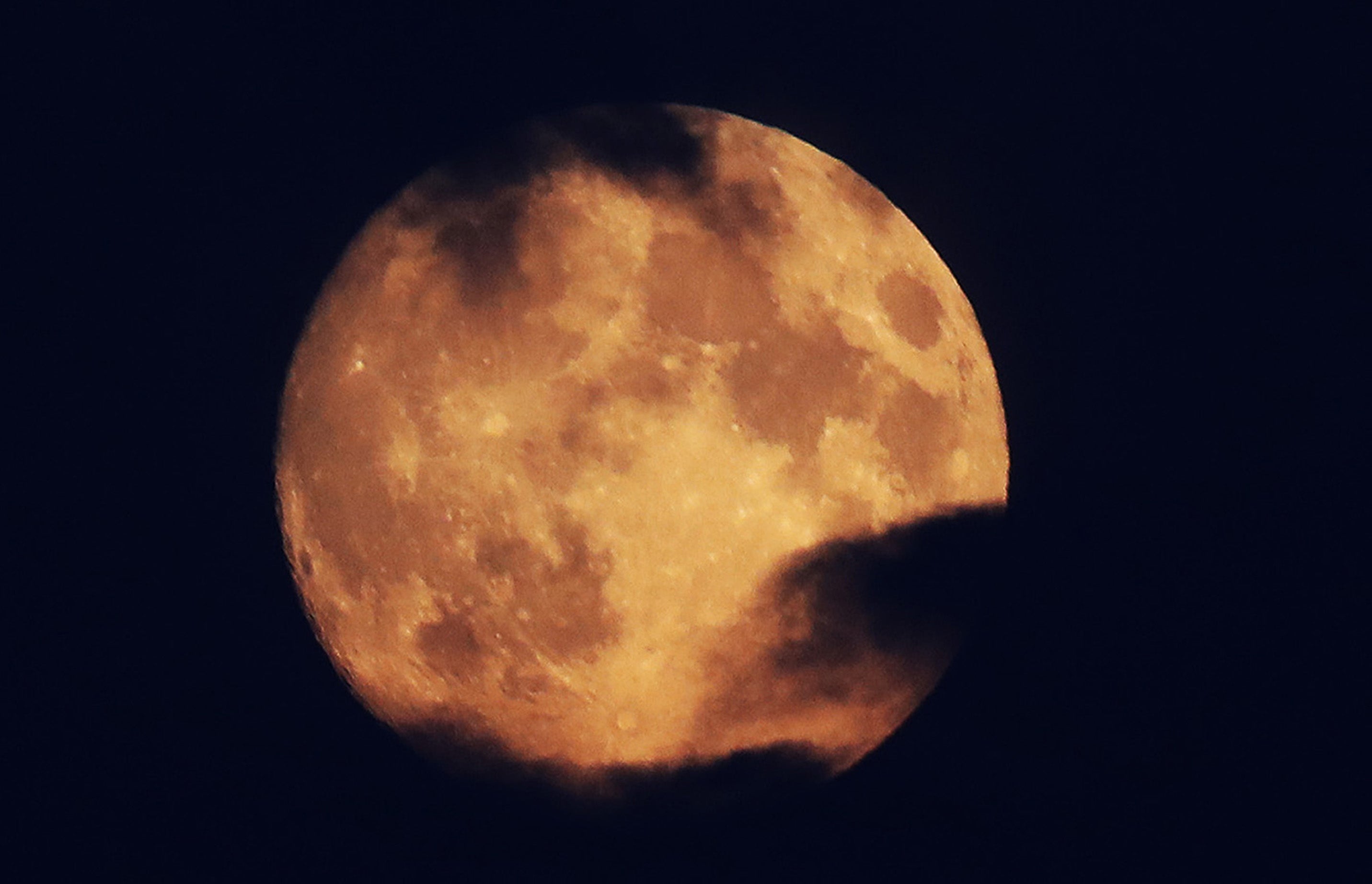Super blood moon set to delight skygazers
This year’s only full lunar eclipse will turn the moon deep red just before dawn on Monday.

Your support helps us to tell the story
From reproductive rights to climate change to Big Tech, The Independent is on the ground when the story is developing. Whether it's investigating the financials of Elon Musk's pro-Trump PAC or producing our latest documentary, 'The A Word', which shines a light on the American women fighting for reproductive rights, we know how important it is to parse out the facts from the messaging.
At such a critical moment in US history, we need reporters on the ground. Your donation allows us to keep sending journalists to speak to both sides of the story.
The Independent is trusted by Americans across the entire political spectrum. And unlike many other quality news outlets, we choose not to lock Americans out of our reporting and analysis with paywalls. We believe quality journalism should be available to everyone, paid for by those who can afford it.
Your support makes all the difference.Skygazers in the UK are set to be treated to a dramatic super blood moon in the early hours of Monday.
In this year’s only full lunar eclipse, the moon will turn a deep coppery red as it drifts into the shadow of the Earth.
The Earth’s atmosphere then bends light from the sun and bathes the moon in a red hue.
The moon will start to enter the Earth’s shadow just after 2.30am, and will start to darken considerably about an hour later, appearing as if it is becoming a waning crescent.
The best viewing time is between 4.29am and 5.06am, when the moon will be completely eclipsed, according to the Royal Museums Greenwich website.
Astronomy enthusiasts should find a high vantage point as the celestial event will be in its “greatest” stages when the moon is low in the south west of the sky, said Tom Kerss, an astronomer from the Royal Observatory Greenwich.
Photographers should use the longest lens possible to take pictures that show details of the lunar surface, he said.
The eclipse is coinciding with a super moon, when the satellite is at its closest to the Earth during its orbit, making it appear larger and brighter than usual.
The blood moon is the first of its kind for two years.
With the last one, in January 2019, obscured by cloud in many parts of the UK, astronomers are hoping for clear skies this year.